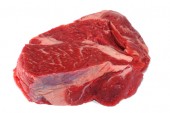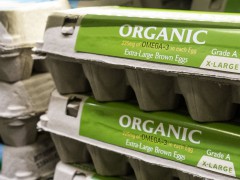On September 11, 2013, a U.S. district judge refused to stop the USDA from requiring more specific country-of-origin labeling (COOL) for meat sold in U.S. stores. Formerly, federal regulations required U.S. retailers to label a product’s country or countries of origin (i.e. “Product of U.S.A.” or “Product of Canada and U.S.A.”). Newly-amended COOL rules, which are scheduled to take effect in November, require retailers to separately identify each country where an animal was born, raised, and slaughtered. See 7 C.F.R 65.300. These new rules, which apply to muscle cuts of beef (including veal), lamb, chicken, goat, and pork, also prohibit commingling meats in the same retail package from animals with different born, raised, and slaughtered country combinations.
The USDA has explained these changes provide consumers with more clarity on where their food comes from and bring the U.S. into compliance with World Trade Organization (WTO) requirements.

“Let’s see some ID, buddy”
The judge’s decision came in a lawsuit initiated earlier this year by U.S. and Canadian meat industry groups challenging the COOL amendments. Among other issues, the groups argue the new COOL rules exceed USDA’s authority and unconstitutionally compel speech in violation of the First Amendment. The court found that neither of these challenges are likely to succeed at trial. Notably, this decision did not decide or end the lawsuit. It merely denied the groups’ request to stop the new regulations from coming into effect while the overall case is decided. Therefore, retailers will have to comply with the new COOL rules by November.
The plaintiffs claim that compliance with the regulations will be costly. That is because the rules effectively will ban commingling of animals purchased from ranchers in different countries, which is a common practice in our food system. They estimate that it will cost the industry at least $200 million to build new pens to segregate animals and alter production processes. In that respect, smaller packers have a natural advantage over larger conglomerates in that they will not have similar segregation challenges.
Bear in mind that beef and pork from foreign-source animals only accounts for an estimated 4-7% of the overall beef and pork production in the United States. See Complaint. However, because most foreign-sourced production occurs primarily along U.S.-Canadian and U.S. -Mexican borders, producers in those areas face most financial burden. In this way, the COOL amendments incentivize U.S. meat producers to limit production inventory to animals born, raised, and slaughtered in the U.S.
Accordingly, Mexican and Canadian ranchers now fear a serious drop in business if American producers stop purchasing foreign-sourced animals to avoid COOL’s costs. Both countries have already threatened trade sanctions in response. Canada’s government said it would ask the WTO for permission to impose up to $1 billion in tariffs on U.S. products ranging from meat and apples to jewelry and furniture if the new regulations go into effect.















